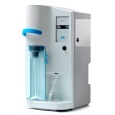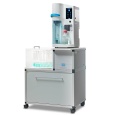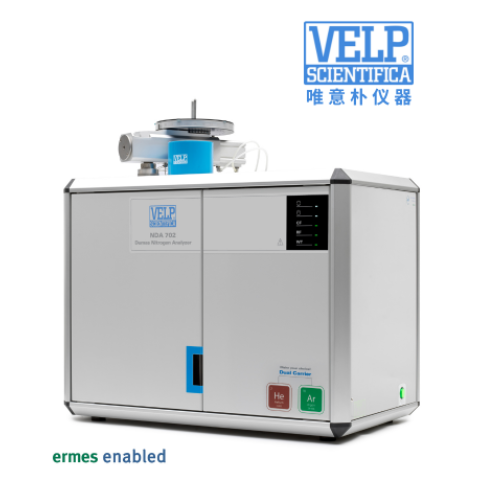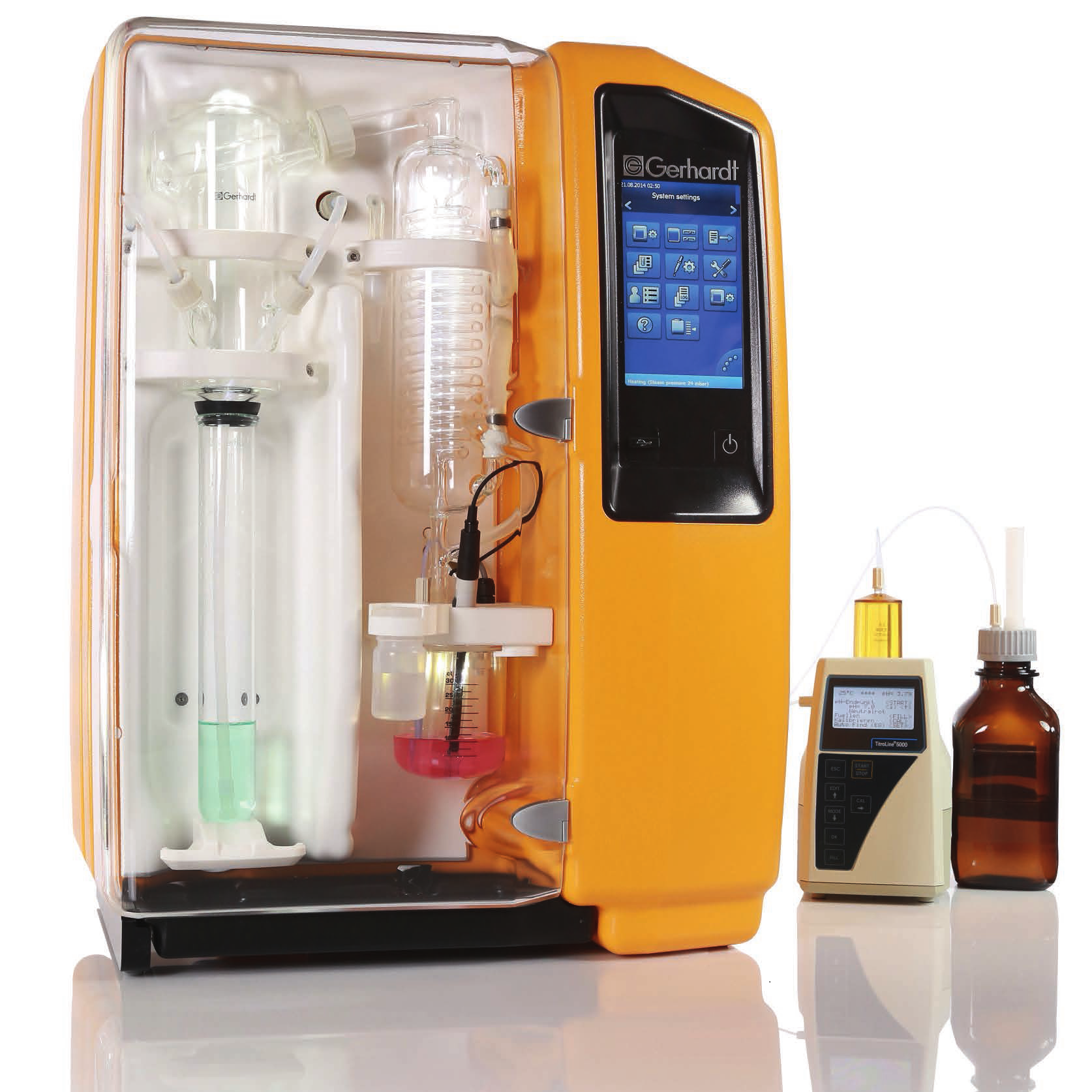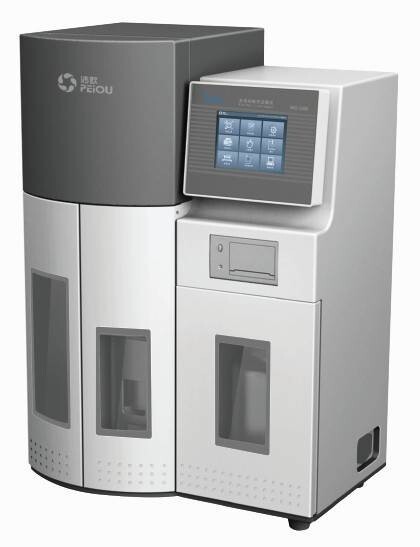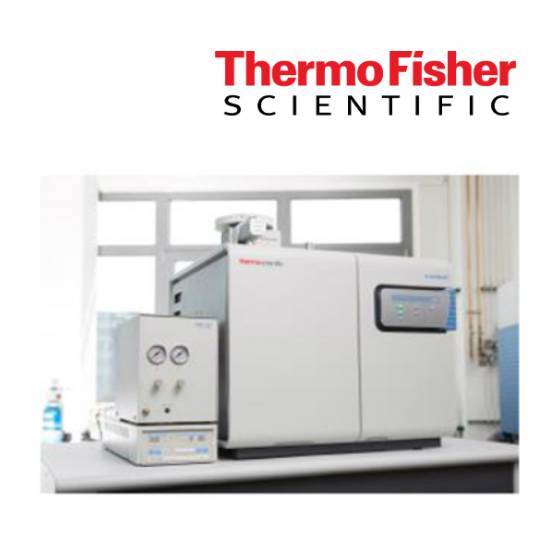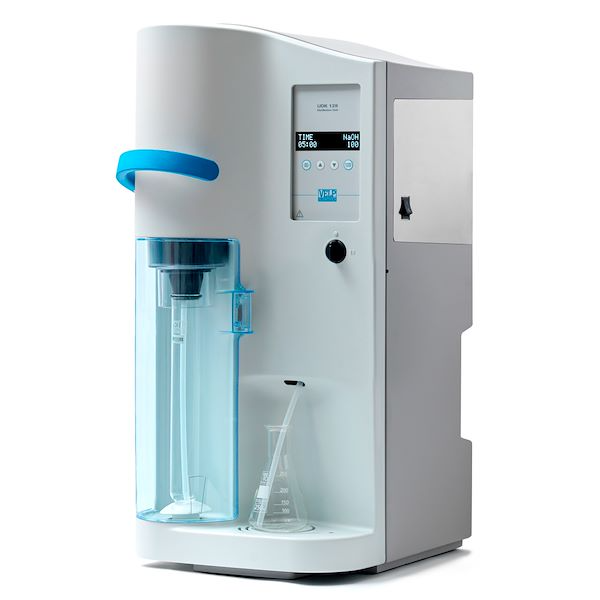
方案详情
文
啤酒的酒精浓度是消费者的一个基本数据。制作精良的水蒸气蒸馏法会使情况有所不同。结果与期望值一致,具有较低的相对标准差(RSD<1%)。结果重复性高。UDK 129和所有其他VELP蒸馏装置是您的实验室提供的理想解决方案。
方案详情

APPLICATION NOTEF&F-K-001-2020/A1 ALCOHOLIC STRENGTH IN BEER Alcoholic Strength in Beers Reference: COMMISSION REGULATION (EC)N°2870/2000 Tested with VELP Scientifica UDK 129 Automatic Kjeldahl Distillation Unit (Code F30200120) Introduction Beer is one of the oldest and most consumed alcoholic drinks in the world. It is also the third most popular drink afterwater and tea. The alcohol content of modern beer is usually around 4-6% alcohol by volume (ABV), although it can varybetween 0.5% and 20%. Alcoholic Determination in Beer The alcohol level of a beer may affect the taste of a beer, and has an effect on the overall body and mouthfeel. Alcoholis the result of the fermentation of a by-product of yeasts that metabolize some derived cereals, fermentable sugars inalcohol and CO2. The final level of alcohol in a given beer depends on the yeast used, the amount of digested sugarand the fermentation method. The ethylic alcohol can be measured as "the number of litres of ethanol contained in 100 litres of beer, both volumes aremeasured at a temperature of 20°C". It is expressed by the symbol %vol'. Steam distillation is a method to determine the alcoholic strength in Beer: the distillate obtained is an ethanol-watermixture and, using a measurement of density by a pycnometer and expressing the results through the official tables, thealcoholic strength can be calculated. Sample Italian Lager Beer Alcohol strength by volume (labeled value): 4.6 % vol Danish Lager Imperial Beer Alcohol strength by volume (labeled value): 7.7 % vol To remove the carbon dioxide, stir gently the sample (1000 ml in a 2000 ml flask) with a VELP magnetic stirrer. Chemicals and Equipment -Alcoholic strength kit (code A00000285) composed by: -Tweezer for closing the NaOH tube -Kjeldahl balloon 500 ml for the distillation of sample (code A00000082) -Pycnometer (volume 100 ml or 50 ml) -200 ml volumetric flasks with stopper -KjTabs VS Antifoam-1000 pcs/box (code.A00000283) -Analytical balance (0.1 mg sensibility) -Cooled Incubator (VELP Scientifica FOC Series i.e. code F10400325) Procedure 1) Measure out 200 ml of the beer using a graduated flask and thermostat it at 20°C.Let the sample adjust totemperature, this will take about 15 minutes. 2) Bring down the volume of the sample exactly to 200 ml by taking away excess sample by a small pipette. 3) Transfer the liquids to the 500 ml test tube adding one KjTabs VS Antifoam. 4) Rinse the volumetric flask with distilled water (3x10ml) in order to collect all the mixture residues and transfer it intothe 500ml test tube. 5) Add 10 ml of distilled water as receiving solution in the same volumetric flask and place it in a beaker filled with coldwater and ice. 6) Insert the distillate outlet tube (it must be put in contact with the receiving solution) and fix it well using Parafilm. Distillation Collect the distillate in the 200 ml graduated flask used to measure the sample quantity. Preheat the UDK 129 performing a wash down (about 7 minutes). Start the distillation according to the parameters below: ·NaOH: 0 ml** · Sample volume: 200 ml ·Sample tube: 500 ml ·Distillation time :7-9 minutes ** Close the NaOH tube using the tweezer received inside the Alcoholic strength kit. In UDK 129 settings, set a distillation time to obtain a maximum of 200 ml of distillate. After the distillation, position the receiving flask in thethermostat for about 15 min and finally bring up to volume (200 ml) using distilled water at 20℃. Density of the Distillate Measure the density of the distillate by a pycnometer: 1) Weigh the empty pycnometer, clean and dry, with all parts in place (Mpyc in g) 2) Weigh the pycnometer filled with the distillate at 20 °C (Mdist in g) 3) Calculate the density of the distillate at 20 °C (Ddist 20℃) following the formula: Vpyc(m3) is the volume of the empty pycnometer and is calculated as follows: Where:Mpyc,H2o=pycnometer weight filled with water at 20°℃ (g) pH20,20c = density of the water at 20°℃ (0.99823 g/ml) 4) Use the density table to express the results 5) Among measurements rinse the pycnometer with the next alcoholic solution. 6) During the entire procedure take care to avoid fat from fingertips, temperature changes when holding the pycnometerand air bubbles in it. Typical Results on different type of Beers Italian Lager Beer Sample quantity (ml) Alcohol strength (%vol) ** 200 4,64 200 4,60 200 4,65 200 4,56 Average±SD% 4.61±0.04 RSD%* 0.8 Danish Lager Imperial Beer Sample quantity (ml) Alcohol strength (% vol) ** 200 7,81 200 7,76 200 7,83 200 7,76 Average± SD% 7.79±0.04 RSD% * 0.5 * RSD%= (Standard Deviation x 100) / Average **The tables in the official standard method (Recommendation n°22 of the International Legal Metrology Organization suggested byReg.EC 2870/2000) have been used For the verification of the distillation apparatus, the Reg. EC 2870/2000 specifies that, distilling 200 ml of an ethanol water mixture withan alcoholic strength of 50% vol., the loss of alcohol must be smaller than 0,1% vol. The UDK 129 satisfies completely the Reg.EC 2870/2000. Conclusions The alcoholic strength in beer is a fundamental data for consumers. A well-made steam distillation can make thedifference. Here, results are reliable and reproducible in accordance with the expected values, with a low relativestandard deviation (RSD<1%). It means high repeatability of the results. The UDK 129 together with all the other VELP Distillation Units are the ideal solution for your lab providing: ·HHigh level of precision and reproducibility High productivity Worldwide official method adherence FReliability and ease-of-use Time saving Moderate running costs 你的啤酒含多少酒精?它是如何产生的,它到底从哪里来的?如何确定酒精量对消费者的选择有重要影响。 啤酒是从谷物中提取的糖发酵而成的。酒精是酵母菌的副产品发酵的结果,酵母菌将某些衍生的谷物和可发酵的糖代谢成酒精和二氧化碳。一种啤酒的最终酒精含量取决于所用的酵母、可消化糖的含量和发酵方法。啤酒的酒精含量通常约为4-6% (ABV),但考虑到目前市场上啤酒的种类繁多,它的酒精含量可能在0.5%到20%之间波动。酒精含量是如此重要,以至于欧盟等一些国家颁布了条例(2011年10月25日的条例(EU) 1169),要求所有酒精含量超过1.2%的啤酒生产商按体积申报实际酒精浓度。在美国,ABV标记要求由各州规定,但馏出-水文测量法参考AOAC作为可接受的测试方法。但是这个参数是如何确定的呢?一种有效的方法包括水蒸气蒸馏:得到的馏出物是乙醇-水混合物。用比重计进行密度测量,并通过表格表示结果,可计算出酒精浓度。VELP's UDK系列是蒸馏过程中必要的工具。 实验样品:Italian Lager Beer Alcohol strength by volume (labeled value): 4.6 % volDanish Lager Imperial Beer Alcohol strength by volume (labeled value): 7.7 % vol实验结果:结论:啤酒的酒精浓度是消费者的一个基本数据。制作精良的水蒸气蒸馏法会使情况有所不同。结果与期望值一致,具有较低的相对标准差(RSD<1%)。结果重复性高。UDK 129和所有其他VELP蒸馏装置是您的实验室提供的理想解决方案。 相关仪器:意大利VELP凯氏蒸馏系统
确定
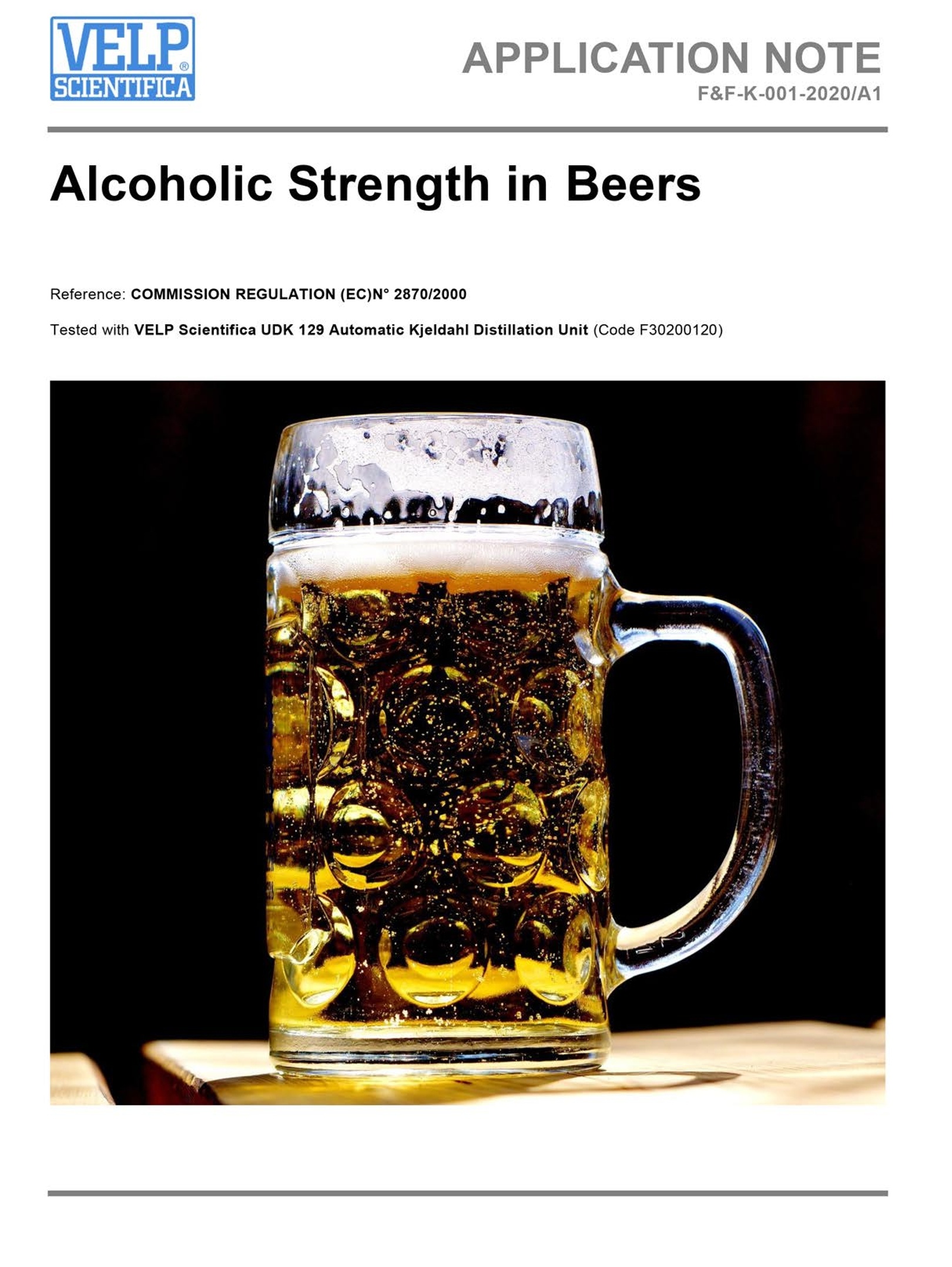

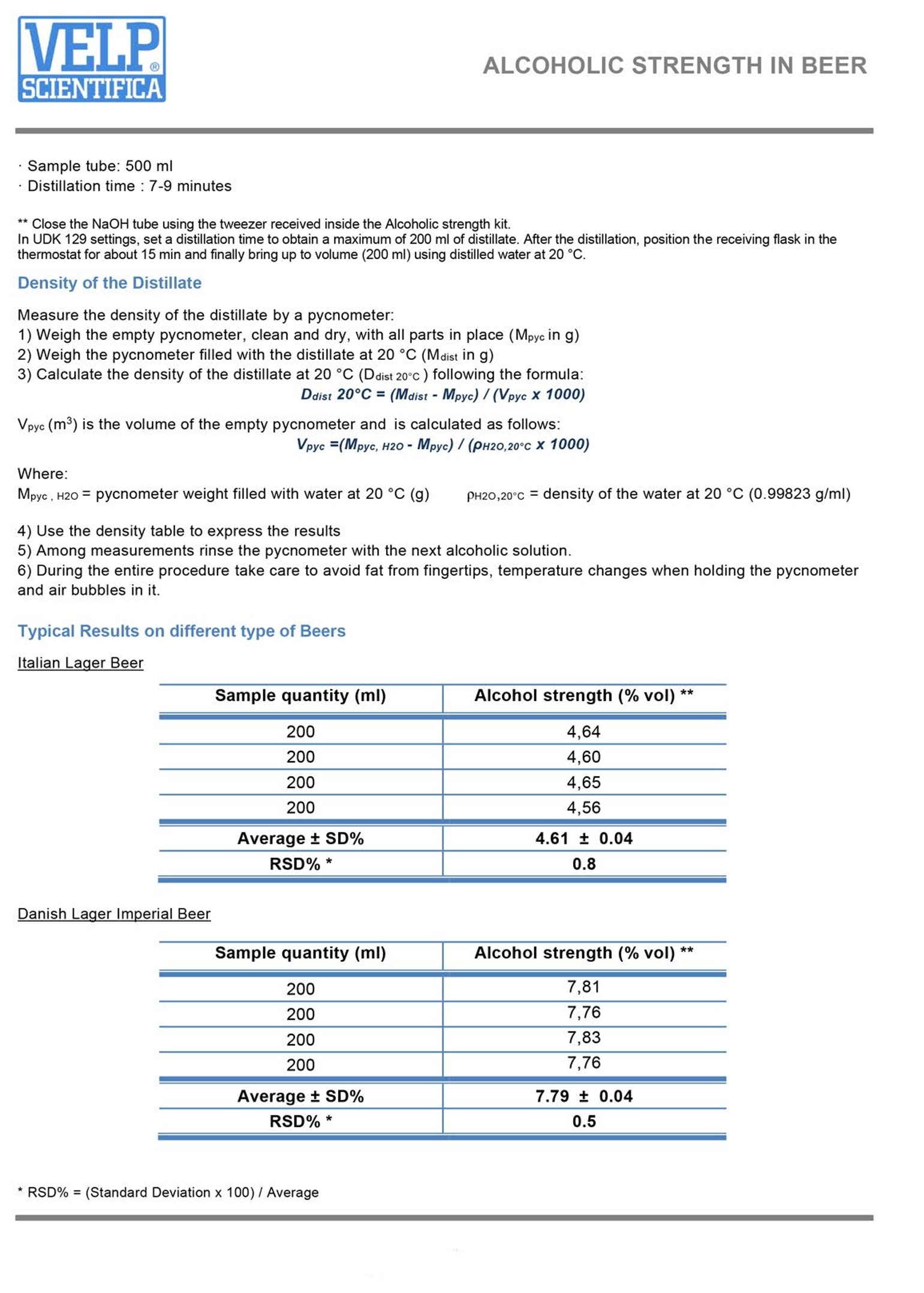
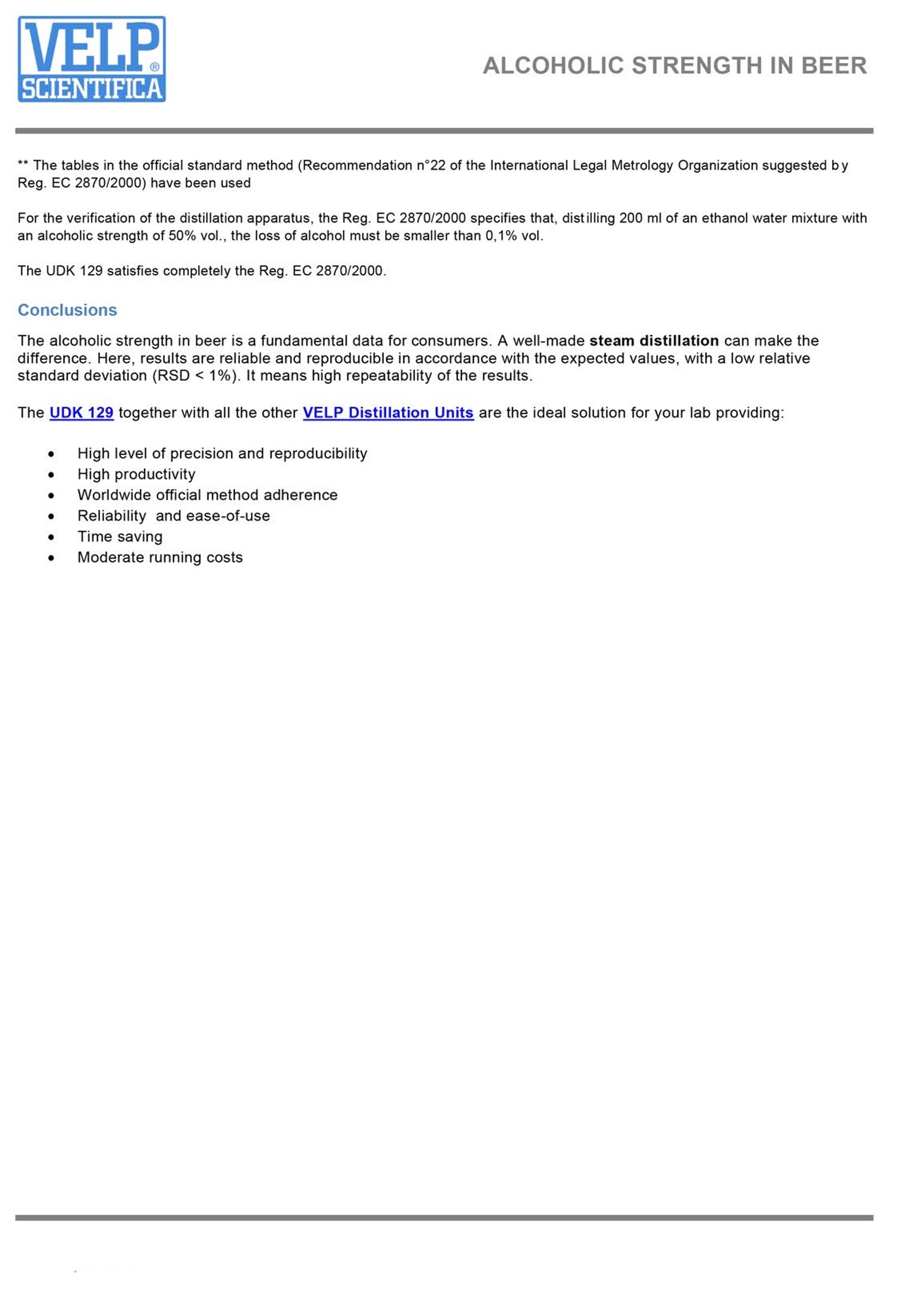
还剩2页未读,是否继续阅读?
北京盈盛恒泰科技有限责任公司为您提供《啤酒中酒精含量检测方案(定氮仪)》,该方案主要用于啤酒中理化分析检测,参考标准--,《啤酒中酒精含量检测方案(定氮仪)》用到的仪器有VELP -半自动凯氏定氮仪UDK129、VELP全自动凯氏定氮仪UDK169 and AutoKjel
推荐专场
相关方案
更多
该厂商其他方案
更多









